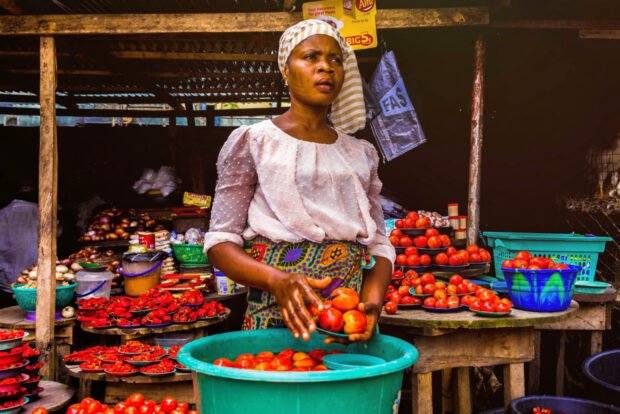The Surge of Financial Inclusion in Sub-Saharan Africa
The remarkable improvement in financial inclusion across sub-Saharan Africa can be largely attributed to fintech solutions, particularly mobile money. As highlighted by Rui Xu, an economist at the International Monetary Fund (IMF), these innovations have transformed the financial landscape, offering new opportunities for individuals who were previously excluded from traditional banking systems.
The Global Shift Towards Digital Payments
The Covid-19 pandemic has accelerated the adoption of digital payments worldwide, creating a surge in formal financial services. According to the World Bank’s latest Global Findex report, two-thirds of adults globally have engaged in digital transactions, with developing economies seeing a significant rise from 35% in 2014 to 57% in 2021. This shift has not only opened new economic avenues but has also contributed to narrowing the gender gap in bank account ownership.
As of 2021, 76% of adults worldwide have access to a bank account or mobile money provider, a notable increase from 51% in 2011. However, despite these advancements, women remain disproportionately unbanked, with approximately 740 million women lacking access to financial institutions.
The Gender Gap in Financial Inclusion
While the gender gap in account ownership has narrowed—from seven percentage points in 2017 to four in 2021—the progress is uneven across different regions. Maria Perdomo from the United Nations Capital Development Fund (UNCDF) pointed out that in some countries, such as Benin and Bangladesh, the gap has actually widened. This disparity underscores the need for targeted interventions to ensure that women benefit equally from financial innovations.
Opportunities in Government-to-Person Payments
Perdomo emphasized the potential of digitizing government-to-person (G2P) payments, particularly for women in sectors like garment manufacturing, where cash payments are still prevalent. However, many governments lack the infrastructure to digitize these payments effectively. Obstacles such as the absence of national digital IDs and low mobile phone ownership among women further complicate the situation.
Barriers to Female Financial Inclusion
Rui Xu identified four primary barriers to women’s financial inclusion:
- Lack of Income: Many women cite insufficient funds as a reason for not having a bank account.
- Legal Discrimination: Restrictions on women’s rights to work or own property hinder their financial independence.
- Education and Financial Literacy: Lower levels of education often lead to a lack of awareness about available fintech solutions.
- Mobile Phone Ownership: Women are less likely to own mobile phones, limiting their access to digital financial services.
The Role of Fintech in Empowering Women
Despite these challenges, fintech solutions are beginning to address these barriers. Mobile money accounts have been shown to reduce poverty among female-headed households by providing a secure place for savings. In India, fintech companies are offering microfinance loans specifically targeted at female entrepreneurs, showcasing the potential for tailored financial products.
The Importance of Education and Awareness
Improving female education is crucial for enhancing financial access. Xu noted that raising awareness about fintech solutions is essential, as many women may not be informed about the options available to them. This lack of awareness can stem from traditional family roles, where women may focus more on household responsibilities than financial matters.
The Complexity of Financial Inclusion
Hillary Miller-Wise from the Bill & Melinda Gates Foundation highlighted the nuances in the latest data on gender gaps in financial inclusion. While some developing economies have seen improvements, others have experienced setbacks. The variability in progress makes it challenging to pinpoint universal drivers of change, as each market presents unique circumstances.
The Role of Mobile Connectivity
Mobile connectivity is a critical factor in financial inclusion. While countries like Kenya have relatively good coverage, remote areas still face significant gaps. Miller-Wise pointed out that the economics of serving dispersed populations can be challenging for financial service providers. Ensuring that mobile network operators can profitably reach these last-mile consumers is essential for building a functional digital ecosystem.
Addressing Data Privacy Concerns
Data privacy is another significant barrier to women’s engagement with fintech. Research indicates that women are often more cautious about sharing personal information online. Xu emphasized the need for improved data privacy regulations to build trust among female users. Educating women about the implications of data sharing is also crucial, as many may unknowingly consent to terms that compromise their privacy.
The Potential of Central Bank Digital Currencies
The discussion also touched on the potential of central bank digital currencies (CBDCs) to enhance financial inclusion. While opinions varied, there was a consensus that if designed thoughtfully, CBDCs could serve as valuable tools for improving access to financial services. However, the focus must remain on ensuring that financial inclusion is a primary objective in their development.
The Path Forward
While fintech solutions have made strides in addressing barriers to financial inclusion, the journey is far from complete. The latest Findex data reveals both progress and ongoing challenges, particularly in narrowing the gender gap. Continued efforts in education, mobile connectivity, regulatory frameworks, and the development of female-oriented financial products are essential for fostering a more inclusive financial landscape.

